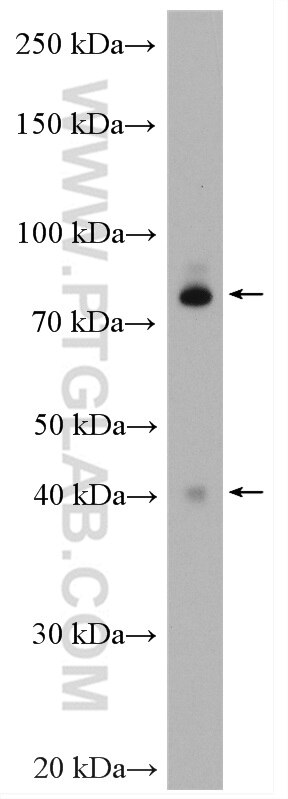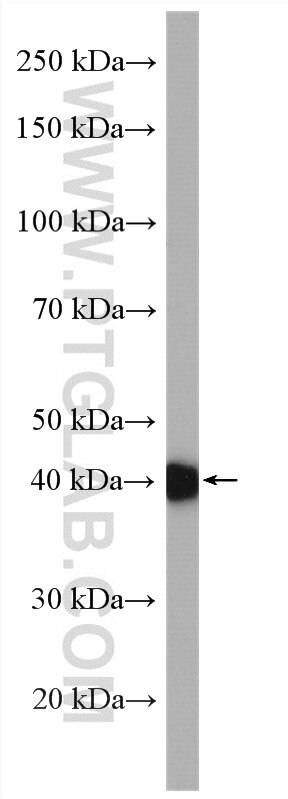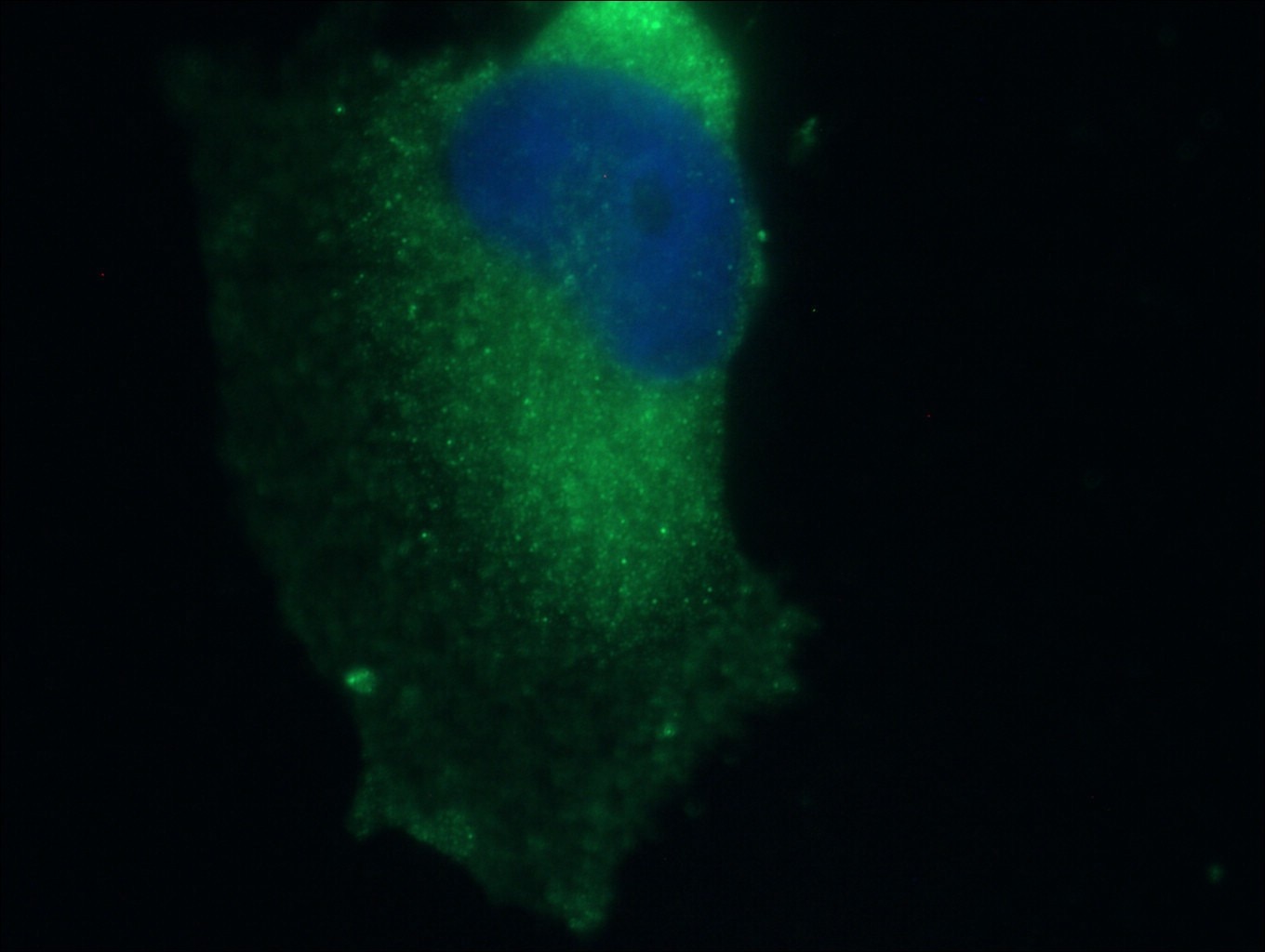CEP89, CCDC123 Polyklonaler Antikörper
CEP89, CCDC123 Polyklonal Antikörper für WB, IF/ICC, ELISA
Wirt / Isotyp
Kaninchen / IgG
Getestete Reaktivität
human, Maus
Anwendung
WB, IF/ICC, ELISA
Konjugation
Unkonjugiert
Kat-Nr. : 24002-1-AP
Synonyme
Geprüfte Anwendungen
| Erfolgreiche Detektion in WB | SH-SY5Y-Zellen, Neuro-2a-Zellen |
| Erfolgreiche Detektion in IF/ICC | U-251-Zellen |
Empfohlene Verdünnung
| Anwendung | Verdünnung |
|---|---|
| Western Blot (WB) | WB : 1:200-1:1000 |
| Immunfluoreszenz (IF)/ICC | IF/ICC : 1:50-1:500 |
| It is recommended that this reagent should be titrated in each testing system to obtain optimal results. | |
| Sample-dependent, check data in validation data gallery | |
Veröffentlichte Anwendungen
| KD/KO | See 1 publications below |
| WB | See 3 publications below |
| IF | See 5 publications below |
Produktinformation
24002-1-AP bindet in WB, IF/ICC, ELISA CEP89, CCDC123 und zeigt Reaktivität mit human, Maus
| Getestete Reaktivität | human, Maus |
| In Publikationen genannte Reaktivität | human, Maus |
| Wirt / Isotyp | Kaninchen / IgG |
| Klonalität | Polyklonal |
| Typ | Antikörper |
| Immunogen | CEP89, CCDC123 fusion protein Ag21206 |
| Vollständiger Name | coiled-coil domain containing 123 |
| Berechnetes Molekulargewicht | 783 aa, 90 kDa |
| Beobachtetes Molekulargewicht | 85-100 kDa, 40 kDa |
| GenBank-Zugangsnummer | BC136328 |
| Gene symbol | CEP89 |
| Gene ID (NCBI) | 84902 |
| Konjugation | Unkonjugiert |
| Form | Liquid |
| Reinigungsmethode | Antigen-Affinitätsreinigung |
| Lagerungspuffer | PBS with 0.02% sodium azide and 50% glycerol |
| Lagerungsbedingungen | Bei -20°C lagern. Nach dem Versand ein Jahr lang stabil Aliquotieren ist bei -20oC Lagerung nicht notwendig. 20ul Größen enthalten 0,1% BSA. |
Hintergrundinformationen
CCDC123(as known as CEP123), also named as CEP89, is a new player in the process of primary ciliogenesis and it also plays a role in mitochondrial metabolism where it may modulate complex IV activity. It has been shown that CEP123 is localized to the distal appendages of the mother centriolecep and the localization of CEP123 is cell cycle-dependent with its levels decreasing during mitosis. CEP123 depletion can cause defects in ciliary vesicle formationcep and prevent the formation of a ciliary vesicle at the distal end of the mother centriole. It is possible that CEP123 is involved in regulating the recruitment of membranes to the centrosome through its interaction with Cep290(PMID:23575228, 23789104, 23348840). 24002-1-AP antibody recognizes all of CEP123 isoforms.
Protokolle
| PRODUKTSPEZIFISCHE PROTOKOLLE | |
|---|---|
| WB protocol for CEP89, CCDC123 antibody 24002-1-AP | Protokoll herunterladen |
| IF protocol for CEP89, CCDC123 antibody 24002-1-AP | Protokoll herunterladen |
| STANDARD-PROTOKOLLE | |
|---|---|
| Klicken Sie hier, um unsere Standardprotokolle anzuzeigen |
Publikationen
| Species | Application | Title |
|---|---|---|
Cell Res NudCL2 is an autophagy receptor that mediates selective autophagic degradation of CP110 at mother centrioles to promote ciliogenesis. | ||
Dev Cell The CEP19-RABL2 GTPase Complex Binds IFT-B to Initiate Intraflagellar Transport at the Ciliary Base. | ||
PLoS Biol The evolutionary conserved proteins CEP90, FOPNL, and OFD1 recruit centriolar distal appendage proteins to initiate their assembly | ||
Elife A hierarchical pathway for assembly of the distal appendages that organize primary cilia | ||
Elife Myristoylated Neuronal Calcium Sensor-1 captures the preciliary vesicle at distal appendages
|





